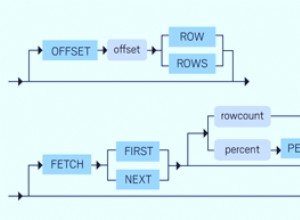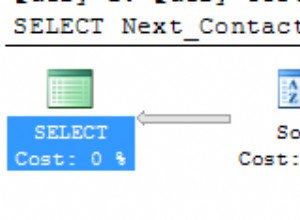Voici quelques scripts que j'ai écrits pour la rétro-ingénierie des schémas de serveur SQL. Ils peuvent être d'une certaine utilité. En outre, à titre d'intérêt général, ils donnent quelques exemples de la manière d'extraire divers éléments d'information du dictionnaire de données. J'ai ajouté une licence MIT ci-dessous pour rendre l'autorisation d'utilisation explicite et pour certains CYA de base sans garantie implicite. Profitez-en.
-- ====================================================================
-- === reverse_engineer_2005.sql ======================================
-- ====================================================================
--
-- Script to generate table, index, pk, view and fk definitions from
-- a SQL Server 2005 database. Adapted from one I originally wrote
-- for SQL Server 2000. It's not comprehensive (doesn't extract
-- partition schemes) but it does do defaults and computed columns
--
-- Run the script with 'results to text' and cut/paste the output into
-- the editor window. Set the schema as described below.
--
-- Copyright (c) 2004-2008 Concerned of Tunbridge Wells
--
-- Permission is hereby granted, free of charge, to any person
-- obtaining a copy of this software and associated documentation
-- files (the "Software"), to deal in the Software without
-- restriction, including without limitation the rights to use,
-- copy, modify, merge, publish, distribute, sublicense, and/or sell
-- copies of the Software, and to permit persons to whom the
-- Software is furnished to do so, subject to the following
-- conditions:
--
-- The above copyright notice and this permission notice shall be
-- included in all copies or substantial portions of the Software.
--
-- THE SOFTWARE IS PROVIDED "AS IS", WITHOUT WARRANTY OF ANY KIND,
-- EXPRESS OR IMPLIED, INCLUDING BUT NOT LIMITED TO THE WARRANTIES
-- OF MERCHANTABILITY, FITNESS FOR A PARTICULAR PURPOSE AND
-- NONINFRINGEMENT. IN NO EVENT SHALL THE AUTHORS OR COPYRIGHT
-- HOLDERS BE LIABLE FOR ANY CLAIM, DAMAGES OR OTHER LIABILITY,
-- WHETHER IN AN ACTION OF CONTRACT, TORT OR OTHERWISE, ARISING
-- FROM, OUT OF OR IN CONNECTION WITH THE SOFTWARE OR THE USE OR
-- OTHER DEALINGS IN THE SOFTWARE.
--
-- ====================================================================
--
set nocount on
-- This does a specific schema. Set the schema here
--
declare @schema varchar (max)
select @schema = 'dbo'
if object_id ('tempdb..#objects') is not null begin
drop table #objects
end
if object_id ('tempdb..#views') is not null begin
drop table #views
end
if object_id ('tempdb..#types') is not null begin
drop table #types
end
-- Gets lists of tables and views belonging to the schema
--
select o.name
,o.object_id
into #objects
from sys.objects o
join sys.schemas s
on s.schema_id = o.schema_id
where o.type in ('U')
and s.name = @schema
select o.name
,o.object_id
into #views
from sys.objects o
join sys.schemas s
on s.schema_id = o.schema_id
where o.type in ('V')
and s.name = @schema
-- Some metadata for rendering types
--
select a.*
into #types
from ((select 'decimal' as typename, 6 as format) union all
(select 'numeric', 6) union all
(select 'varbinary', 1) union all
(select 'varchar', 1) union all
(select 'char', 1) union all
(select 'nvarchar', 1) union all
(select 'nchar', 1)) a
-- This generates 'drop table' and 'drop view' statements
--
select 'if exists (select 1' + char(10) +
' from sys.objects o' + char(10) +
' join sys.schemas s' + char(10) +
' on o.schema_id = s.schema_id' + char(10) +
' where o.name = ''' + o.name + '''' + char(10) +
' and s.name = ''' + @schema +'''' + char(10) +
' and o.type = ''U'') begin' + char(10) +
' drop table [' + @schema + '].[' + o.name + ']' + char(10) +
'end' + char(10) +
'go' + char(10)
from sys.objects o
join #objects o2
on o.object_id = o2.object_id
where o.type = 'U'
select 'if exists (select 1' + char(10) +
' from sys.objects o' + char(10) +
' join sys.schemas s' + char(10) +
' on o.schema_id = s.schema_id' + char(10) +
' where o.name = ''' + o.name + '''' + char(10) +
' and s.name = ''' + @schema + '''' + char(10) +
' and o.type = ''V'') begin' + char(10) +
' drop view [' + @schema + '].[' + o.name + ']' + char(10) +
'end' + char(10) +
'go' + char(10)
from sys.objects o
join #objects o2
on o.object_id = o2.object_id
where o.type = 'V'
-- This generates table definitions
--
select case when c.column_id =
(select min(c2.column_id)
from sys.columns c2
where c2.object_id = o.object_id)
then 'create table [' + @schema + '].[' + isnull(o.name, 'XYZZY') + '] (' + char(10)
else ''
end +
left(' [' +rtrim(c.name) + '] ' +
' ', 48) +
isnull(calc.text,
t.name +
case when tc.format & 2 = 2
then ' (' +convert (varchar, c.precision) +
case when tc.format & 2 = 2
then ', ' + convert (varchar, c.scale)
else ''
end + ')'
when tc.format & 1 = 1
then ' (' + convert (varchar, c.max_length) + ')'
else ''
end + ' ' +
case when c.is_nullable <> 0 then 'null'
else 'not null'
end + isnull(ident.text, isnull(con.text, ''))) +
case when c.column_id =
(select max(c2.column_id)
from sys.columns c2
where c2.object_id = o.object_id)
then char(10) + ')' + char(10) + 'go' + char(10)
else ','
end
from sys.objects o
join #objects o2
on o.object_id = o2.object_id
join sys.columns c
on c.object_id = o.object_id
join sys.types t
on c.user_type_id = t.user_type_id
left join
(select object_id,
column_id,
'as ' + definition as text
from sys.computed_columns) calc
on calc.object_id = o.object_id
and calc.column_id = c.column_id
left join
(select parent_object_id,
parent_column_id,
' default ' + definition as text
from sys.default_constraints) con
on con.parent_object_id = o.object_id
and con.parent_column_id = c.column_id
left join
(select o.object_id,
col.column_id,
' identity (' + convert(varchar, ident_seed(o.name)) + ', ' +
convert(varchar, ident_incr(o.name)) + ')' as text
from sys.objects o
join sys.columns col
on o.object_id = col.object_id
where columnproperty (o.object_id, col.name, 'IsIdentity') = 1) as ident
on ident.object_id = o.object_id
and ident.column_id = c.column_id
left join #types tc
on tc.typename = t.name
where o.type = 'U'
order by o.name,
c.column_id
-- This generates view definitions
--
select definition + char(10) + 'go' + char(10)
from sys.sql_modules c
join sys.objects o
on c.object_id = o.object_id
join #views o2
on o.object_id = o2.object_id
-- This generates PK and unique constraints
--
select case when ik.key_ordinal =
(select min(ik2.key_ordinal)
from sys.index_columns ik2
where ik2.object_id = ik.object_id
and ik2.index_id = ik.index_id)
then 'alter table [' + rtrim (s.name) + '].[' + rtrim(t.name) + ']' + char(10) +
' add constraint [' + rtrim (pk.name) + '] ' +
case when pk.type = 'PK' then 'primary key'
when pk.type = 'UQ' then 'unique'
else 'foobar'
end + char(10) +
' ('
else ' ,'
end +
'[' + rtrim(c.name) + ']' +
case when ik.key_ordinal =
(select max(ik2.key_ordinal)
from sys.index_columns ik2
where ik2.object_id = ik.object_id
and ik2.index_id = ik.index_id)
then ')' + char(10) + 'go' + char(10)
else ''
end
from sys.objects t -- table
join #objects o
on t.object_id = o.object_id
join sys.schemas s
on s.schema_id = t.schema_id
join sys.objects pk -- key
on pk.parent_object_id = t.object_id
join sys.columns c -- columns
on c.object_id = t.object_id
join sys.indexes i -- get index for constraint
on i.object_id = t.object_id
and i.name = pk.name
join sys.index_columns ik -- index column and name
on ik.object_id = i.object_id
and ik.index_id = i.index_id
and ik.column_id = c.column_id -- vvv Get the right index
where c.name = index_col('[' + s.name + '].[' + t.name + ']', i.index_id, ik.key_ordinal)
and pk.type in ('PK', 'UQ') --probably redundant
order by t.object_id,
pk.object_id,
ik.key_ordinal
-- This generates indexes
--
select case when ik.key_ordinal =
(select min(ik2.key_ordinal)
from sys.index_columns ik2
where ik2.object_id = ik.object_id
and ik2.index_id = ik.index_id)
then 'create ' +
case when is_unique_constraint = 1 then 'unique '
else ''
end +
'index [' + rtrim(i.name) + ']' + char (10) +
' on [' + rtrim(t.name) + ']' + char (10) +
' ('
else ' ,'
end +
'[' + c.name + ']' +
case when ik.key_ordinal =
(select max(ik2.key_ordinal)
from sys.index_columns ik2
where ik2.object_id = ik.object_id
and ik2.index_id = ik.index_id)
then ')' + char(10) + 'go' + char(10)
else ''
end
from sys.objects t -- table
join #objects o
on o.object_id = t.object_id
join sys.columns c -- columns
on c.object_id = t.object_id
join sys.indexes i -- get index for constraint
on i.object_id = t.object_id
join sys.index_columns ik -- index column and name
on ik.object_id = i.object_id
and ik.index_id = i.index_id
and ik.column_id = c.column_id -- vvv Get the right index
where c.name = index_col(t.name, i.index_id, ik.key_ordinal)
and t.type = 'U'
and i.name <> t.name
and i.name not in
(select c2.name
from sys.objects c2
where c2.parent_object_id = t.object_id
and c2.type in ('PK', 'UQ'))
order by t.name,
i.name,
ik.key_ordinal
-- This generates foreign keys
--
select con.constraint_text as [--constraint_text]
from ((select case when kc.constraint_column_id =
(select min(k2.constraint_column_id)
from sys.foreign_key_columns k2
where k2.constraint_object_id = k.object_id)
then 'alter table [' + @schema + '].[' + rtrim(t.name) + ']' + char(10) +
' add constraint [' + rtrim (k.name) + '] ' + char(10) +
' foreign key ('
else ' ,'
end +
'[' + tc.name + ']' +
case when kc.constraint_column_id =
(select max(k2.constraint_column_id)
from sys.foreign_key_columns k2
where k2.constraint_object_id = k.object_id)
then ')'
else ''
end as constraint_text,
t.name as table_name,
k.name as constraint_name,
kc.constraint_column_id as row_order,
t.object_id
from sys.foreign_keys k
join sys.objects t
on t.object_id = k.parent_object_id
join sys.columns tc
on tc.object_id = t.object_id
join sys.foreign_key_columns kc
on kc.constraint_object_id = k.object_id
and kc.parent_object_id = t.object_id
and kc.parent_column_id = tc.column_id
join sys.objects r
on r.object_id = kc.referenced_object_id
join sys.columns rc
on kc.referenced_object_id = rc.object_id
and kc.referenced_column_id = rc.column_id)
union all
(select case when kc.constraint_column_id =
(select min(k2.constraint_column_id)
from sys.foreign_key_columns k2
where k2.constraint_object_id = k.object_id)
then ' references [' + rtrim(r.name) + ']' + char(10) +
' ('
else ' ,'
end +
'[' + rc.name + ']' +
case when kc.constraint_column_id =
(select max(k2.constraint_column_id)
from sys.foreign_key_columns k2
where k2.constraint_object_id = k.object_id)
then ')' + char(10) + 'go' + char(10)
else ''
end as constraint_text,
t.name as table_name,
k.name as constraint_name,
kc.constraint_column_id + 100 as row_order,
t.object_id
from sys.foreign_keys k
join sys.objects t
on t.object_id = k.parent_object_id
join sys.columns tc
on tc.object_id = t.object_id
join sys.foreign_key_columns kc
on kc.constraint_object_id = k.object_id
and kc.parent_object_id = t.object_id
and kc.parent_column_id = tc.column_id
join sys.objects r
on r.object_id = kc.referenced_object_id
join sys.columns rc
on kc.referenced_object_id = rc.object_id
and kc.referenced_column_id = rc.column_id)) con
join #objects o
on con.object_id = o.object_id
order by con.table_name,
con.constraint_name,
con.row_order




